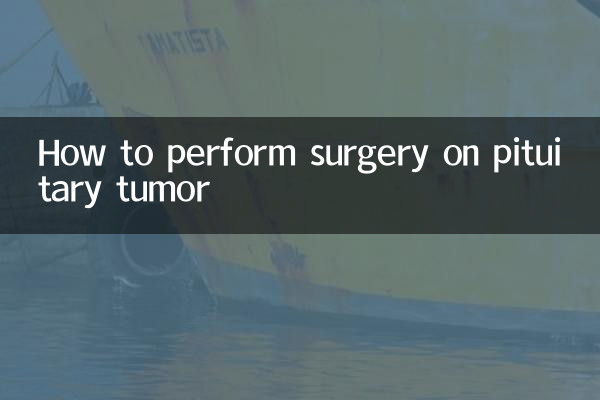How to perform surgery on pituitary tumors: comprehensive analysis of surgical methods and precautions
Pituitary tumors are benign tumors that occur in the pituitary gland. Although they are mostly benign, they may cause serious symptoms due to compression of surrounding tissues or abnormal hormone secretion. Surgery is one of the main ways to treat pituitary tumors. This article will combine the hot medical topics on the Internet in the past 10 days to provide a structured analysis of the common methods, indications and postoperative care of pituitary tumor surgery.
1. Common types of pituitary tumor surgery

| Surgery type | Applicable situations | Advantages | Disadvantages |
|---|---|---|---|
| Transnasphenoidal approach surgery (minimally invasive) | Most pituitary tumors (especially microadenomas) | Small trauma, quick recovery, no external scars | Limited effect on large or aggressive tumors |
| craniotomy | Tumors that are large or invade surrounding tissue | Complete resection of complex tumors | Big trauma, long recovery period, high risk |
| endoscopic assisted surgery | Microadenomas or some macroadenomas | Clear vision and precise resection | Requires professional equipment and technology |
2. Indications and contraindications for surgery
| Classification | Specific content |
|---|---|
| Indications |
|
| Contraindications |
|
3. Precautions before and after surgery
1. Preoperative preparation:
2. Postoperative care:
4. Surgical risks and complications
| Complication type | incidence | Countermeasures |
|---|---|---|
| cerebrospinal fluid leak | About 3%-5% | Bed rest, secondary surgery if necessary |
| diabetes insipidus | 10%-20% | hormone replacement therapy |
| infection | <2% | antibiotic treatment |
5. Postoperative rehabilitation and follow-up
Long-term follow-up is required after pituitary tumor surgery. It is recommended that:
Summary:Pituitary tumor surgical techniques have become minimally invasive and precise, but appropriate options need to be selected based on tumor size, location and individual patient conditions. Standard postoperative management and follow-up are the key to ensuring curative effect. If you have related symptoms, it is recommended to go to a neurosurgery or endocrinology department for evaluation as soon as possible.

check the details

check the details